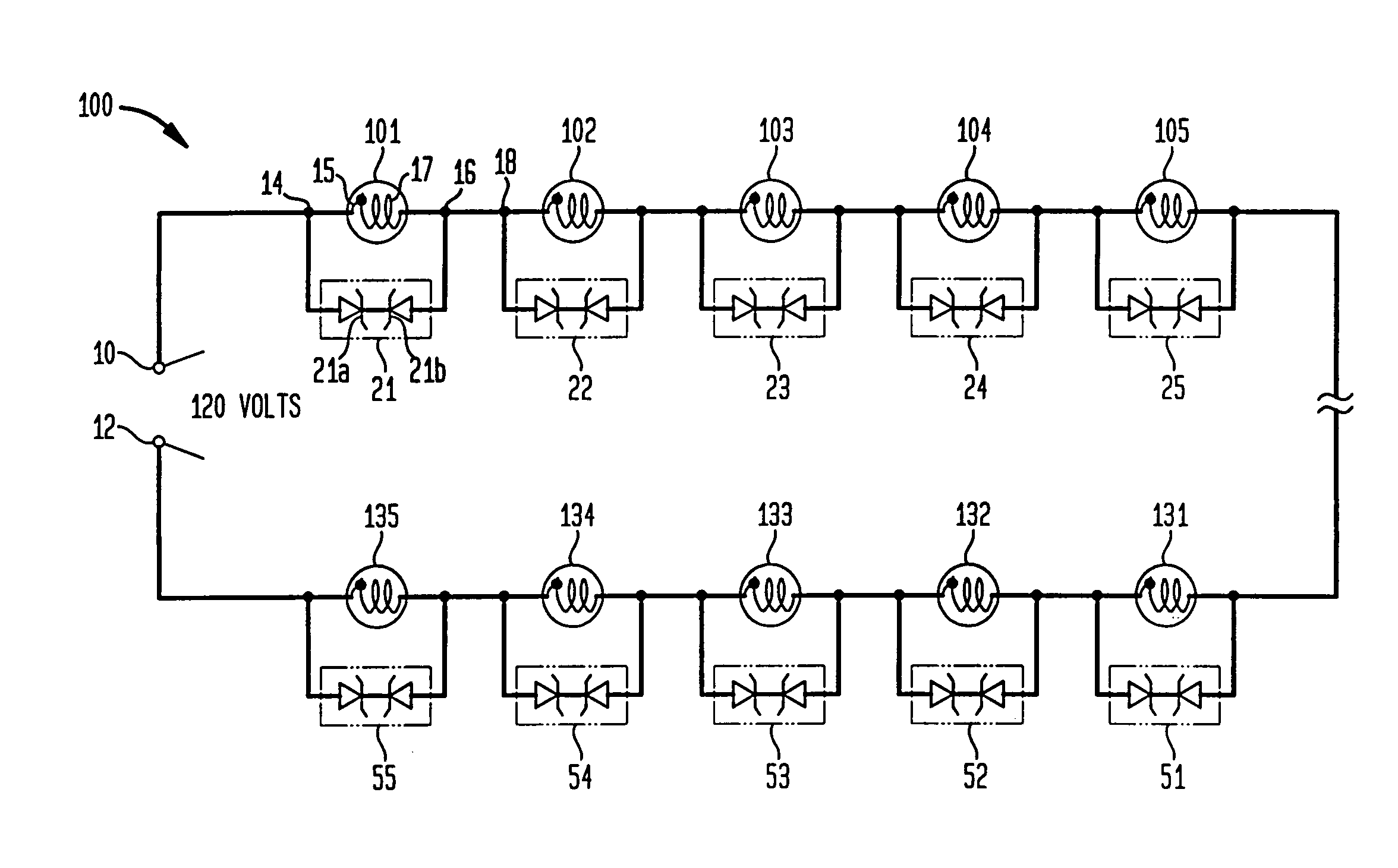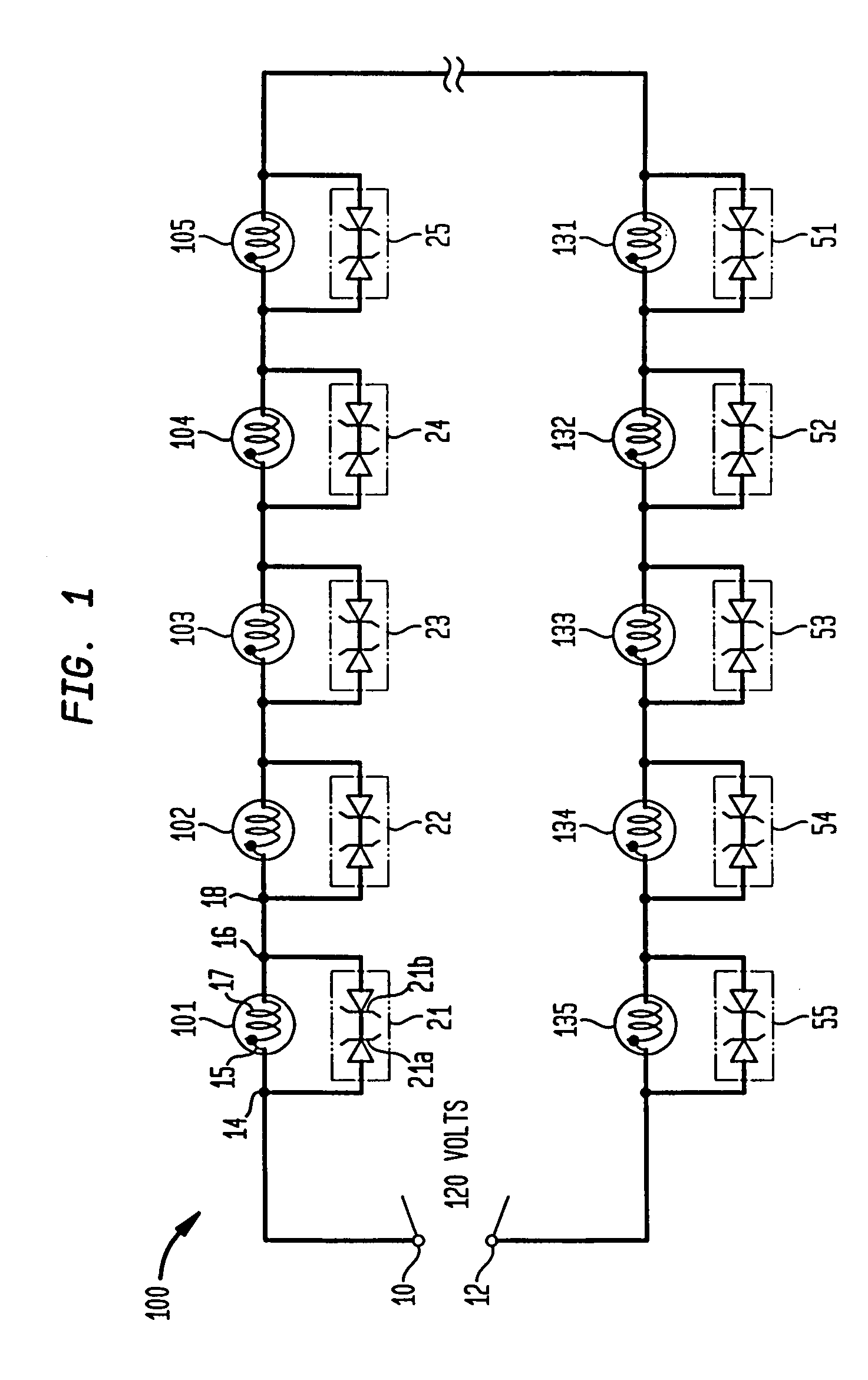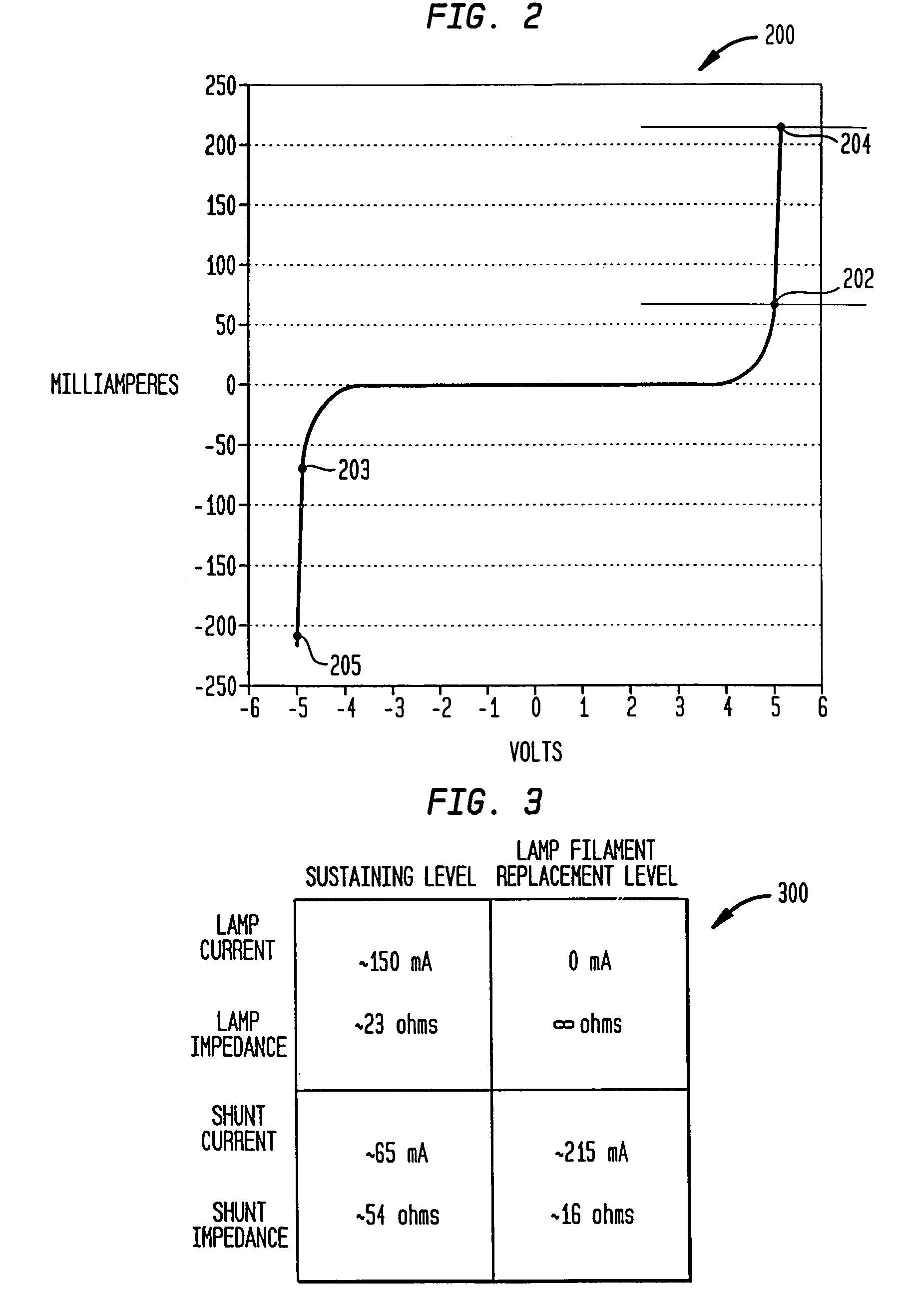Voltage regulated light string
a technology of voltage regulation and light strings, applied in the direction of lighting and heating apparatus, color-music instruments, applications, etc., can solve the problems of less efficient power consumption of light strings and almost flicker-free string operation, and achieve the effect of low manufacturing cost, simple and economical construction, and reduced overall cost of manufacturing the final produ
- Summary
- Abstract
- Description
- Claims
- Application Information
AI Technical Summary
Benefits of technology
Problems solved by technology
Method used
Image
Examples
Embodiment Construction
[0019]The present invention now will be described more fully with reference to the accompanying drawings, in which several presently preferred embodiments of the invention are shown. This invention may, however, be embodied in various forms and should not be construed as limited to the embodiments set forth herein. Rather, these embodiments are provided so that this disclosure will be thorough and complete, and will fully convey the scope of the invention to those skilled in the art.
[0020]FIG. 1 shows a schematic diagram of a series connected light string 100 in accordance with the present invention. Input terminals 10 and 12 are adapted to be connected to a suitable electrical source, such as 120–125 volts of alternating current normally found in a typical household or business. Connected to the input terminal 10 is a first terminal 14 of a first electrical flasher light bulb 101. The electrical flasher light bulb 101 may suitably include a bimetallic strip 15 which conducts curren...
PUM
 Login to View More
Login to View More Abstract
Description
Claims
Application Information
 Login to View More
Login to View More - R&D
- Intellectual Property
- Life Sciences
- Materials
- Tech Scout
- Unparalleled Data Quality
- Higher Quality Content
- 60% Fewer Hallucinations
Browse by: Latest US Patents, China's latest patents, Technical Efficacy Thesaurus, Application Domain, Technology Topic, Popular Technical Reports.
© 2025 PatSnap. All rights reserved.Legal|Privacy policy|Modern Slavery Act Transparency Statement|Sitemap|About US| Contact US: help@patsnap.com



